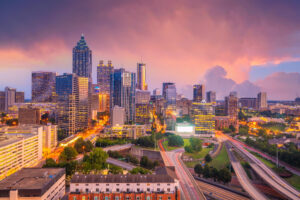Last week in my column about Airbnb, I coined a new phase: Uber Economy. The Uber Economy is an economic evolution that we as consumers are experiencing as we speak. In simple terms, it’s about solving massive consumer inefficiencies to create entirely new spending categorizes.
Consider this: Uber is known as everyone’s private driver. There’s an app on your smartphone that pinpoints available Lincoln town cars or nice SUVs (all the color black). With the touch of this app, your Uber driver knows where you’re located and will come pick you up, usually in five to 10 minutes. And (as if that’s not good enough), you can track your Uber car on a map via GPS so you know exactly how close it’s getting. Uber has completely revolutionized the taxi service/transportation industry. As good as it is for you — the passenger — it’s even better for the drivers. In a pre-Uber economy, limo drivers might do two or three trips a day. They were relegated to dropping off passengers and waiting idle for hours while you eat dinner or go to a charity event. Now, much of that wasted idle time can be used by thousands of other passengers so that drivers can double, triple, or more, the number of rides that they can provide, in turn making them a lot more money. This new technology has solved a massive inefficiency (idle drivers and frustrated passengers) so that consumers like me who completely gave up on cabs years ago, now use Uber’s service multiple times a month.
Why is the Uber Economy So important?
As investors in the U.S. economy and stock market, the only way our stock market will continue to rise over time is to have economic growth. Growth is the answer.
But how feasible is that when the world already seems so advanced? You may have heard this apocryphal quote from Charles Duell, 1899 Commissioner of the U.S. Patent Office, “everything that can be invented has been invented.” But in today’s world, there are categories that we spend money on, significant money, that actually weren’t invented a few years ago. These categories/items across all industries are being driven by new technology. A few relatable examples:
- 7 years ago my iPhone spending was $0. Today it’s $150+/month.
7 years ago I spent $0 on apps for my iPhone, today I spend several dollars a month.
5 years ago I spent $0 on a high tech gym. Today I spend $150/month on Orange Theory Fitness.
5 years ago I spent $0 for groceries online. Today I spend up to $100+/month (this is only after we have already gone to the grocery store).
How about a personal chef? 5 years ago a personal chef was unheard of, but because millions of Americans can’t (or don’t like to) cook, they employ a chef who’s not working during the day to make lunch and dinner for your family. Or maybe people use an online personal chef service, such as Munchery. Expect another $150 a month.
5 years ago American’s idea of food delivery was pizza and pizza alone. Today, many Americans spend up to $100 on food delivery from dozens and dozens of their favorite restaurants thanks to Zifty and Grubhub.
This summer I have a wedding to attend in California. Instead of booking a hotel room, I went straight to Airbnb – and found a great house overlooking the Pacific Ocean for less than I would be paying per night for most hotel rooms.
This is how our U.S. economy will continue to grow, through the Uber Economy. Taking inefficient industries like cabs, home based lodging, food delivery, personal cooks, etc. and creating whole new categories for spending. Making inefficiencies efficient in a meaningful way that will encourage brand new economic activity.
Mark my words, the Uber Economy will have us spending money next year on something that doesn’t even exist today.
What else needs disruption? What other consumer related industries are a mess and could be improved dramatically?










